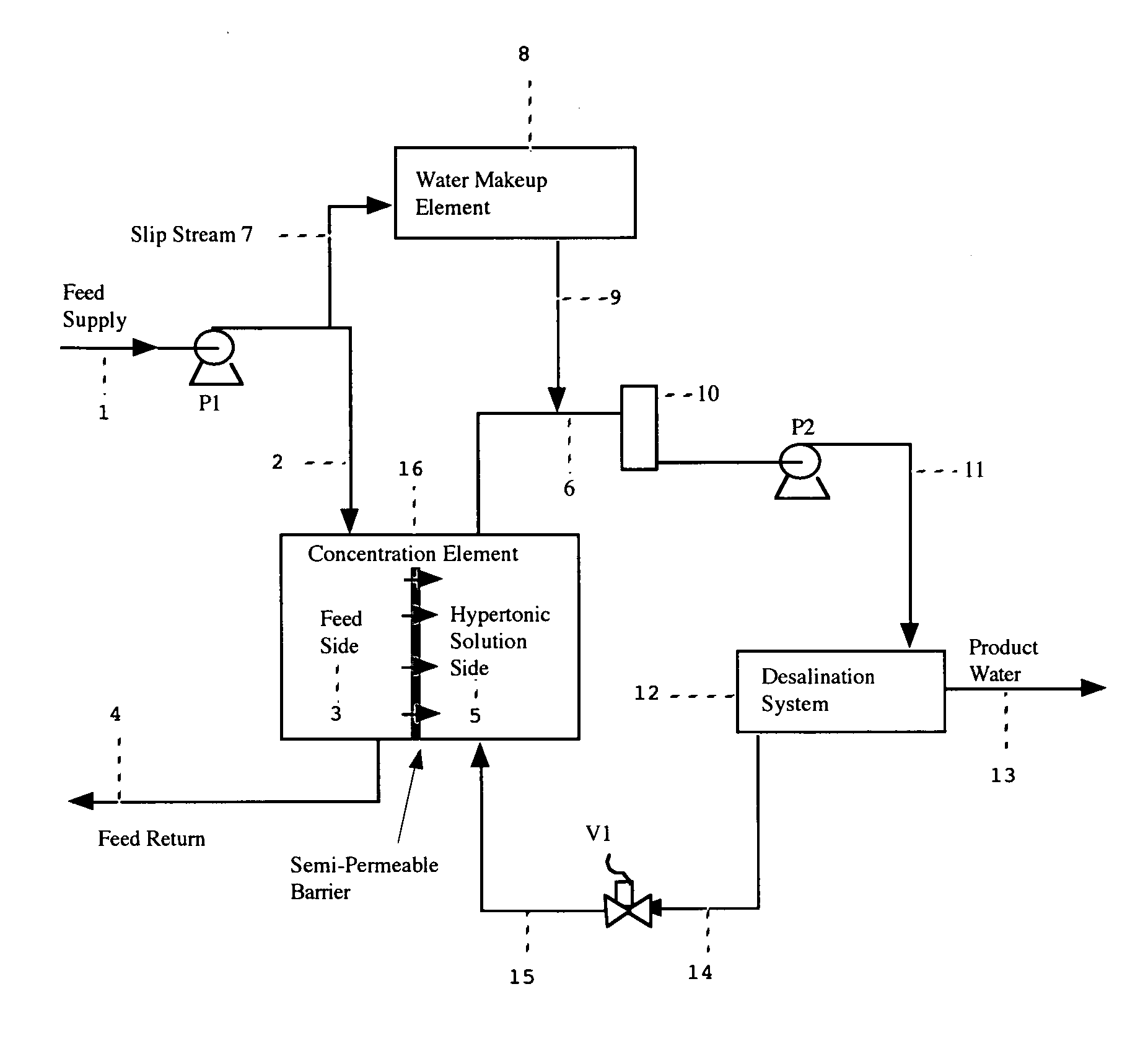Low water recovery rate desalination system and method
a desalination system and low water recovery technology, applied in water/sewage multi-stage treatment, membranes, separation processes, etc., can solve the problems of expensive equipment replacement or cleaning, limited maximum recovery rate conventional systems can operate at, and localized negative effects of concentrated brine discharge to the environmen
- Summary
- Abstract
- Description
- Claims
- Application Information
AI Technical Summary
Benefits of technology
Problems solved by technology
Method used
Image
Examples
example 2
[0046]This example describes the use of some embodiments with an electrodialysis system, such as described in U.S. Pat. No. 4,787,982, operating as the desalination system (12) in FIG. 1. It can be applicable to various forms of electrodialysis such as multi stage, and flow reversal systems. The example illustrates the use of some embodiments for the desalination of seawater. The process can be the same as that shown in FIG. 1. The specifications are provided in Table 1 & 3. While this embodiment depicts the use of electrodialysis as the desalination system, any desalination system may be used.
[0047]
TABLE 3ED specifications for seawater desalinationPressure (P2) = 30 kPaSeparation = 8.5 to 11.5%Product flow rate = 7 LMHTotal dissolved solids, product =
PUM
 Login to View More
Login to View More Abstract
Description
Claims
Application Information
 Login to View More
Login to View More - R&D
- Intellectual Property
- Life Sciences
- Materials
- Tech Scout
- Unparalleled Data Quality
- Higher Quality Content
- 60% Fewer Hallucinations
Browse by: Latest US Patents, China's latest patents, Technical Efficacy Thesaurus, Application Domain, Technology Topic, Popular Technical Reports.
© 2025 PatSnap. All rights reserved.Legal|Privacy policy|Modern Slavery Act Transparency Statement|Sitemap|About US| Contact US: help@patsnap.com



